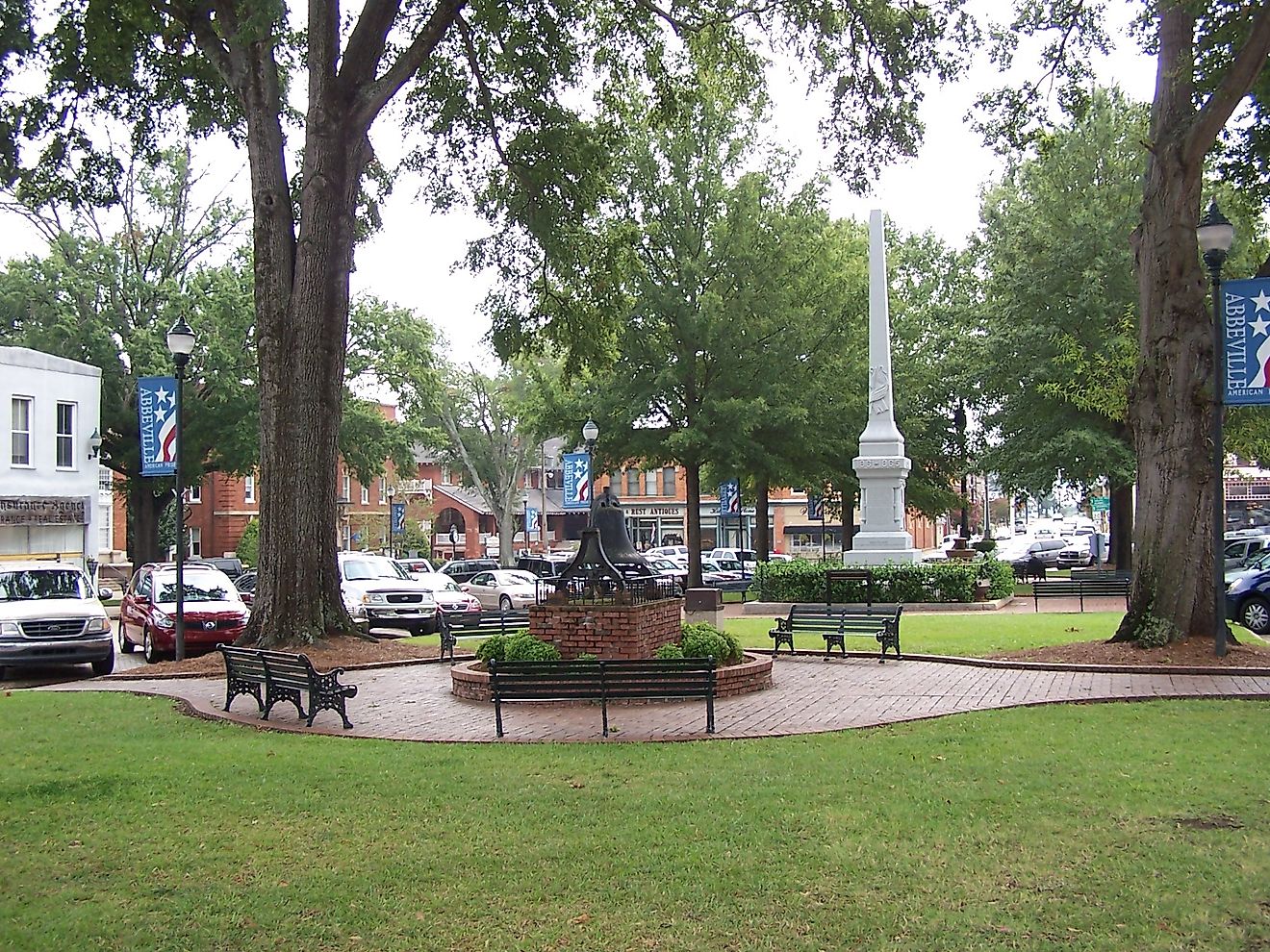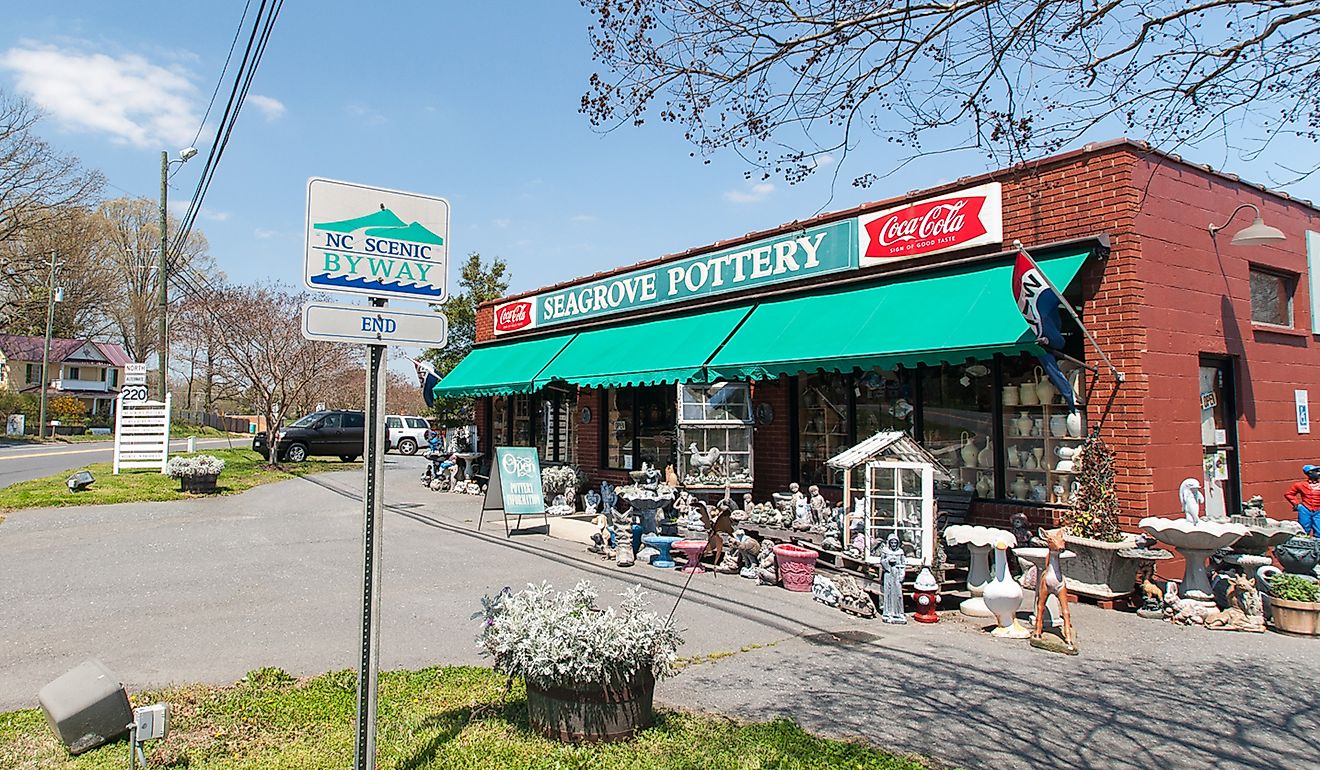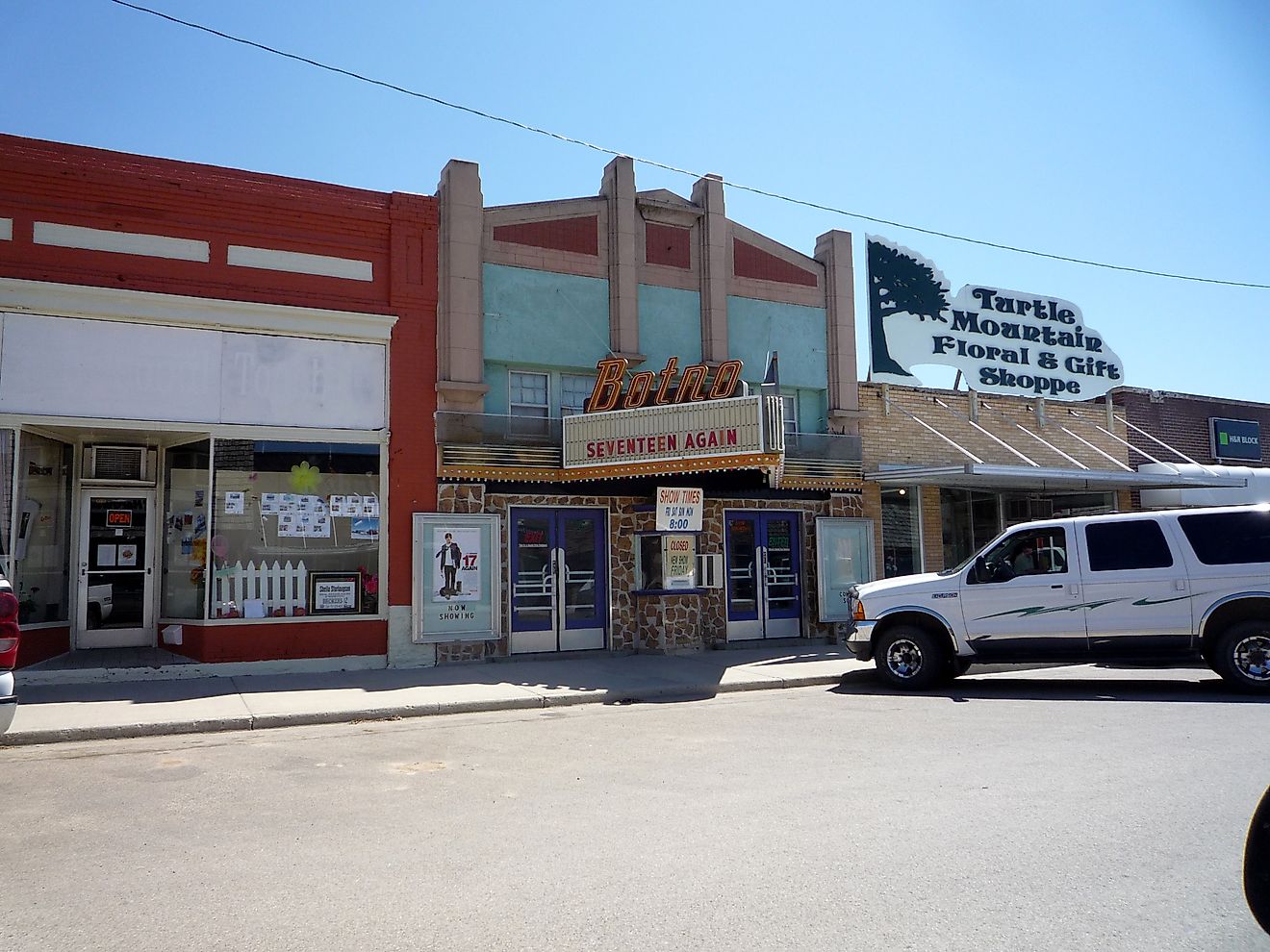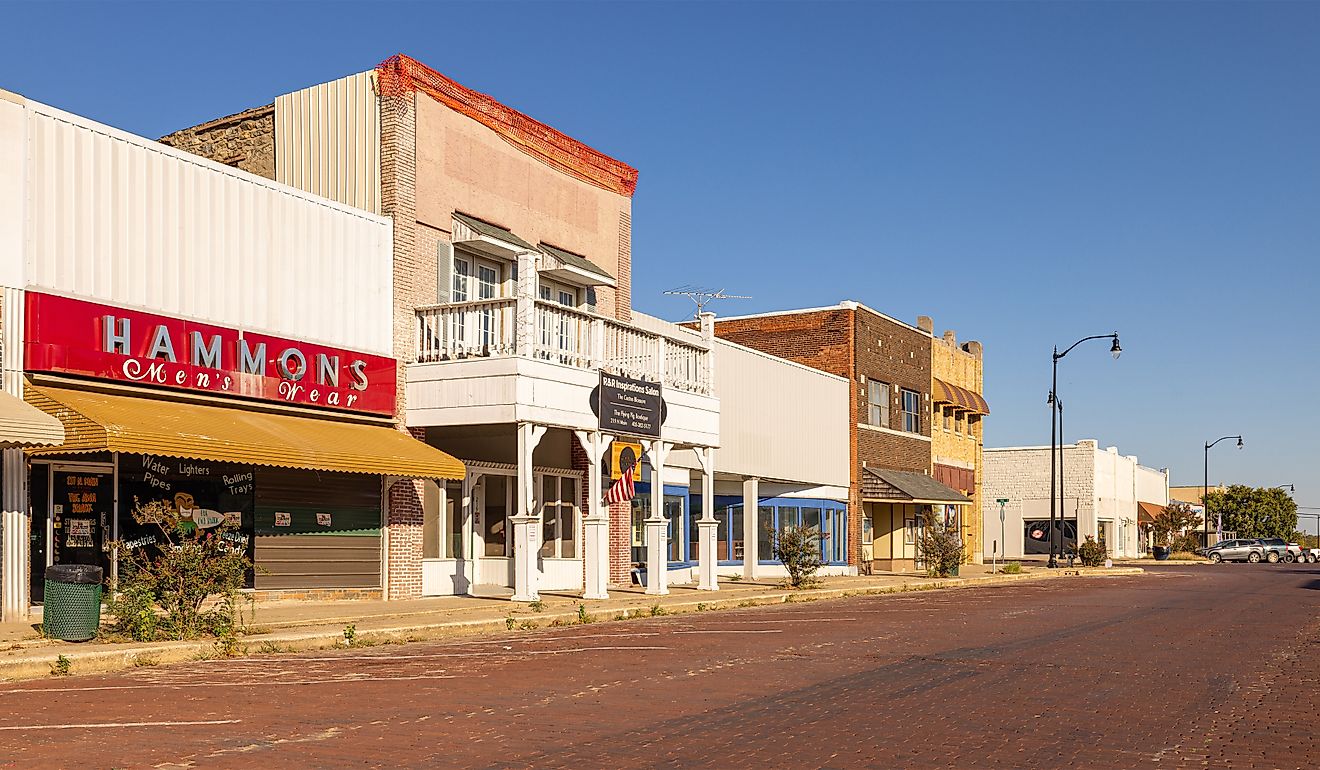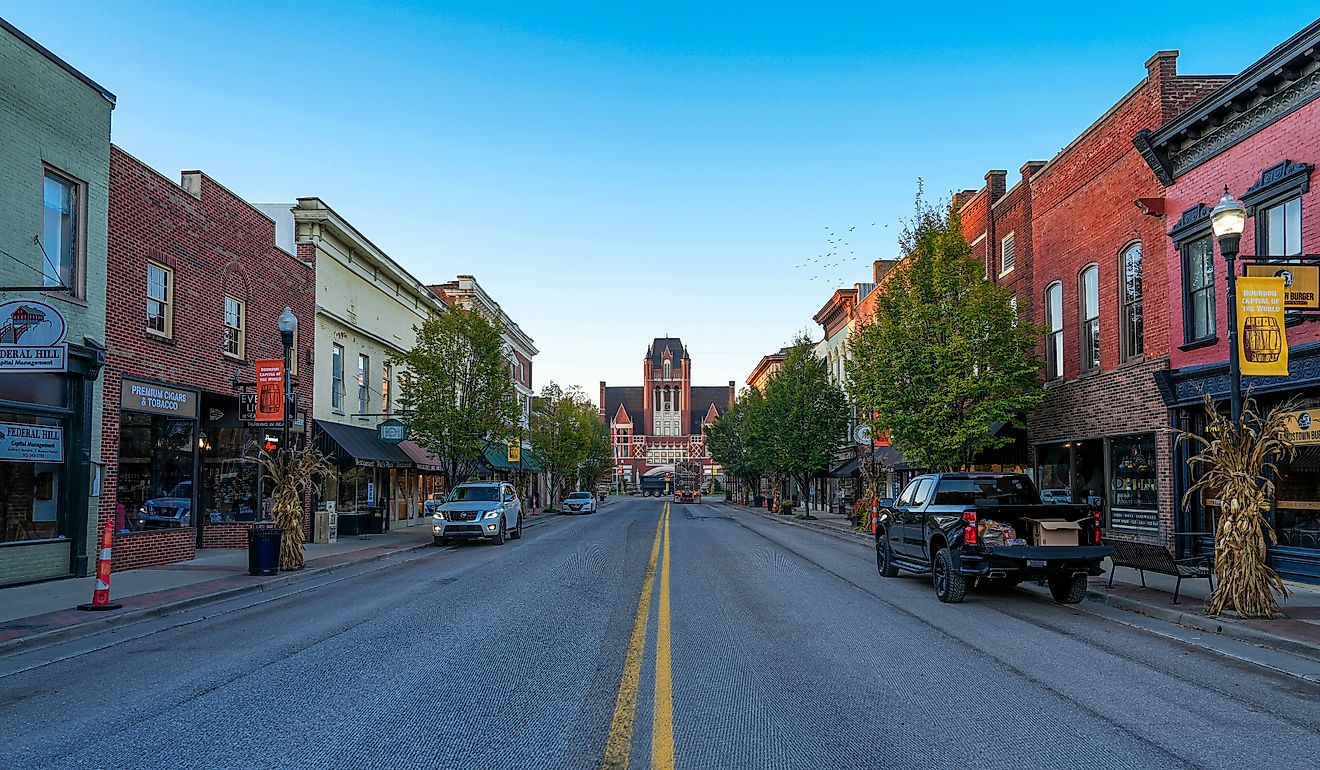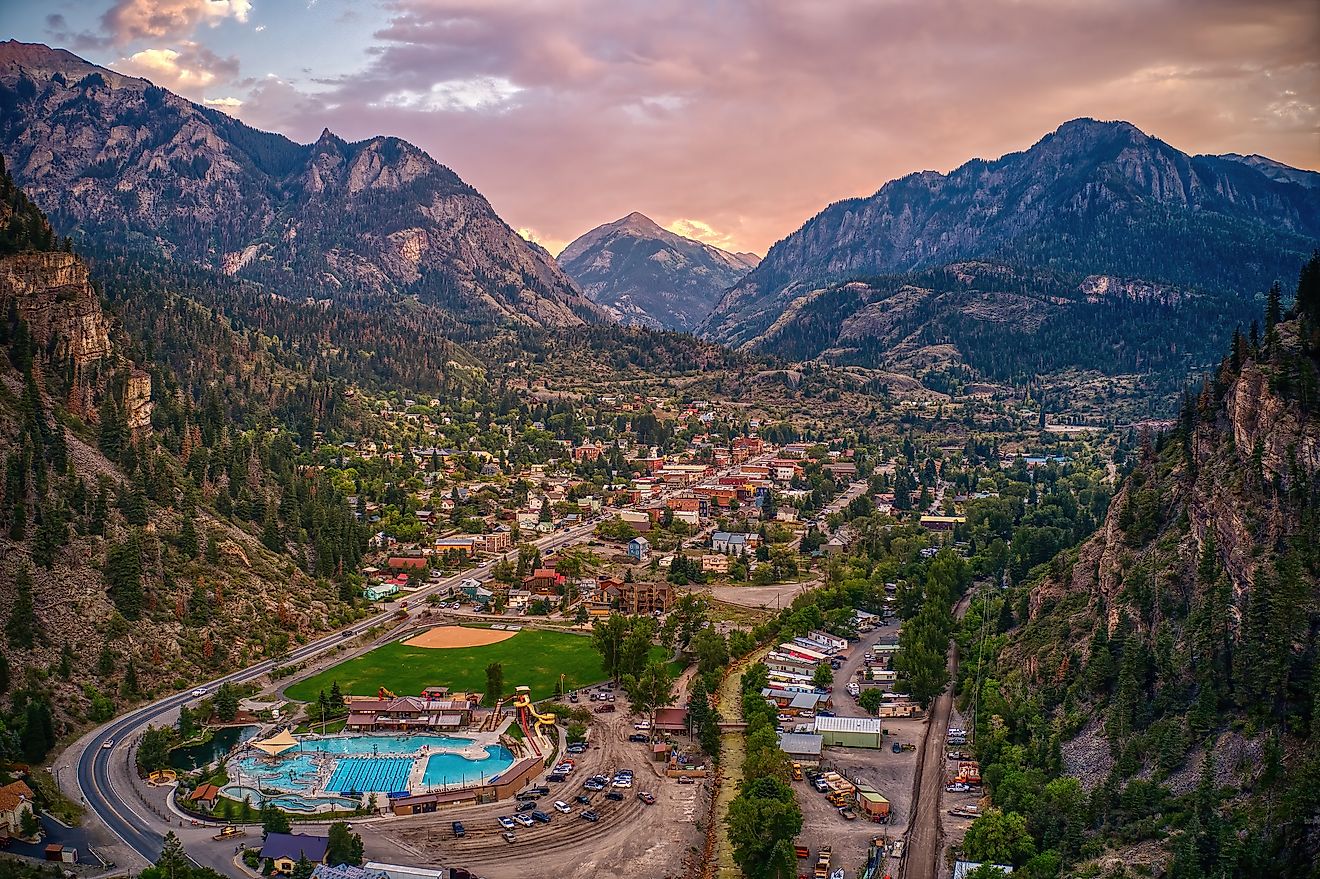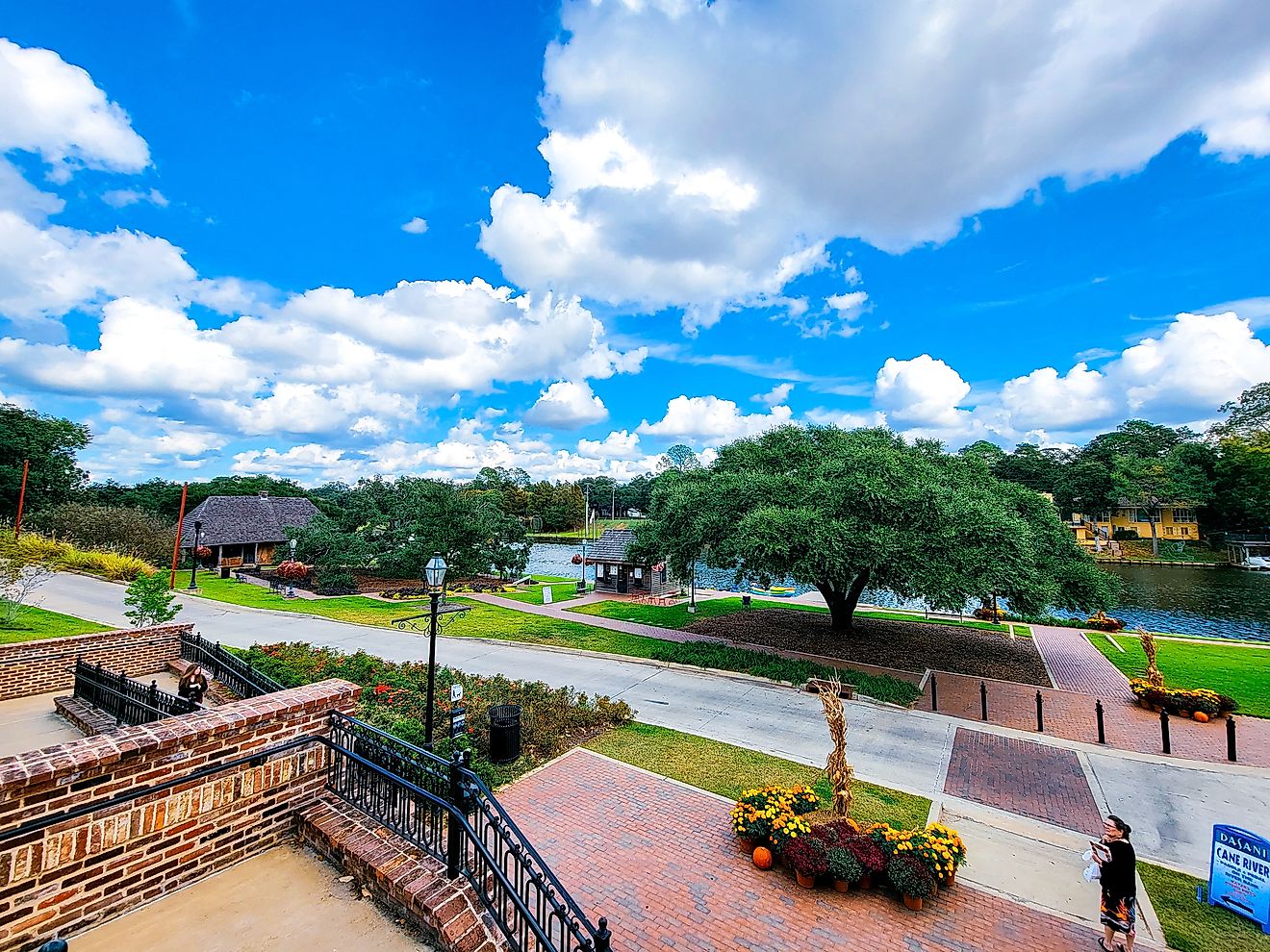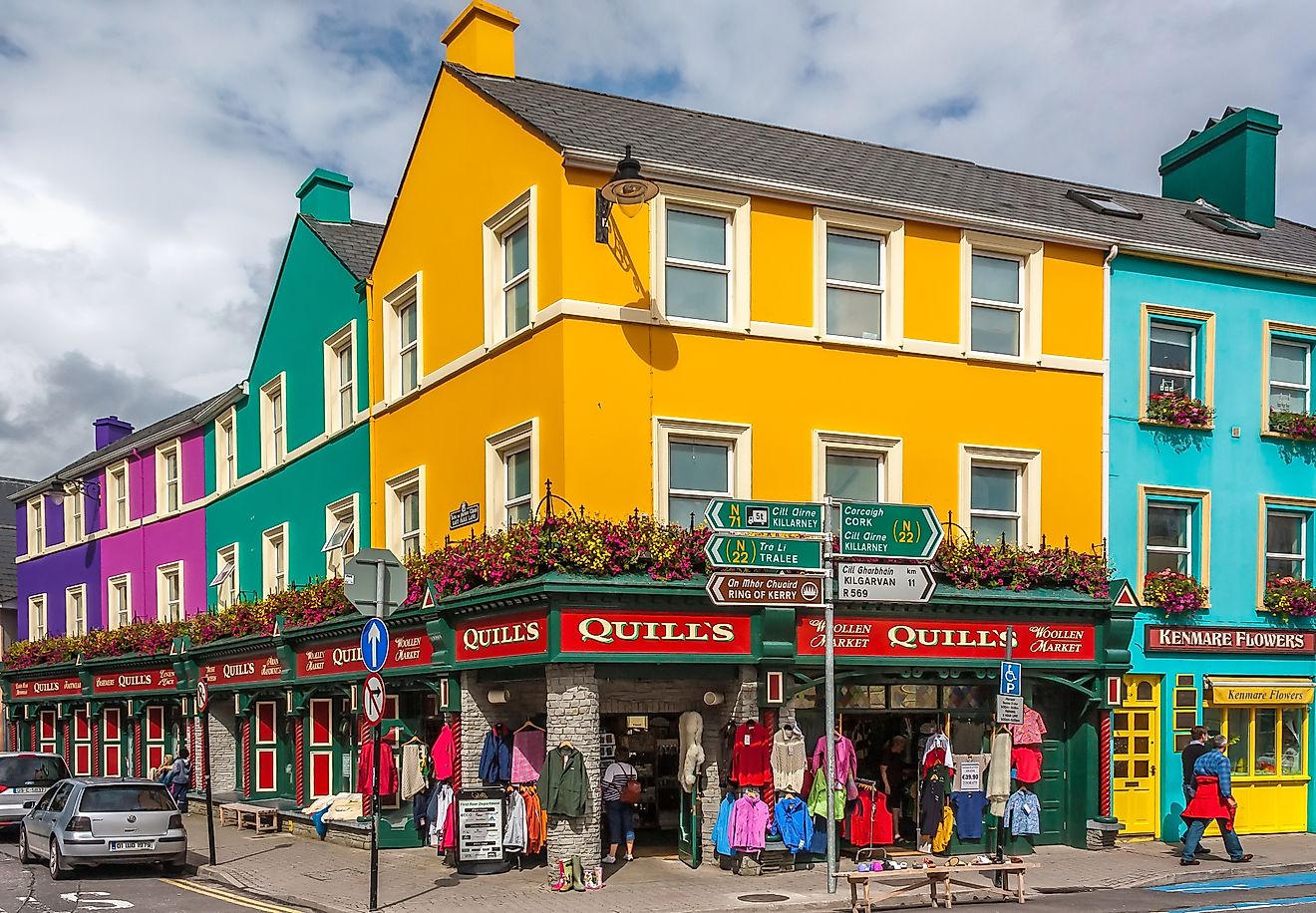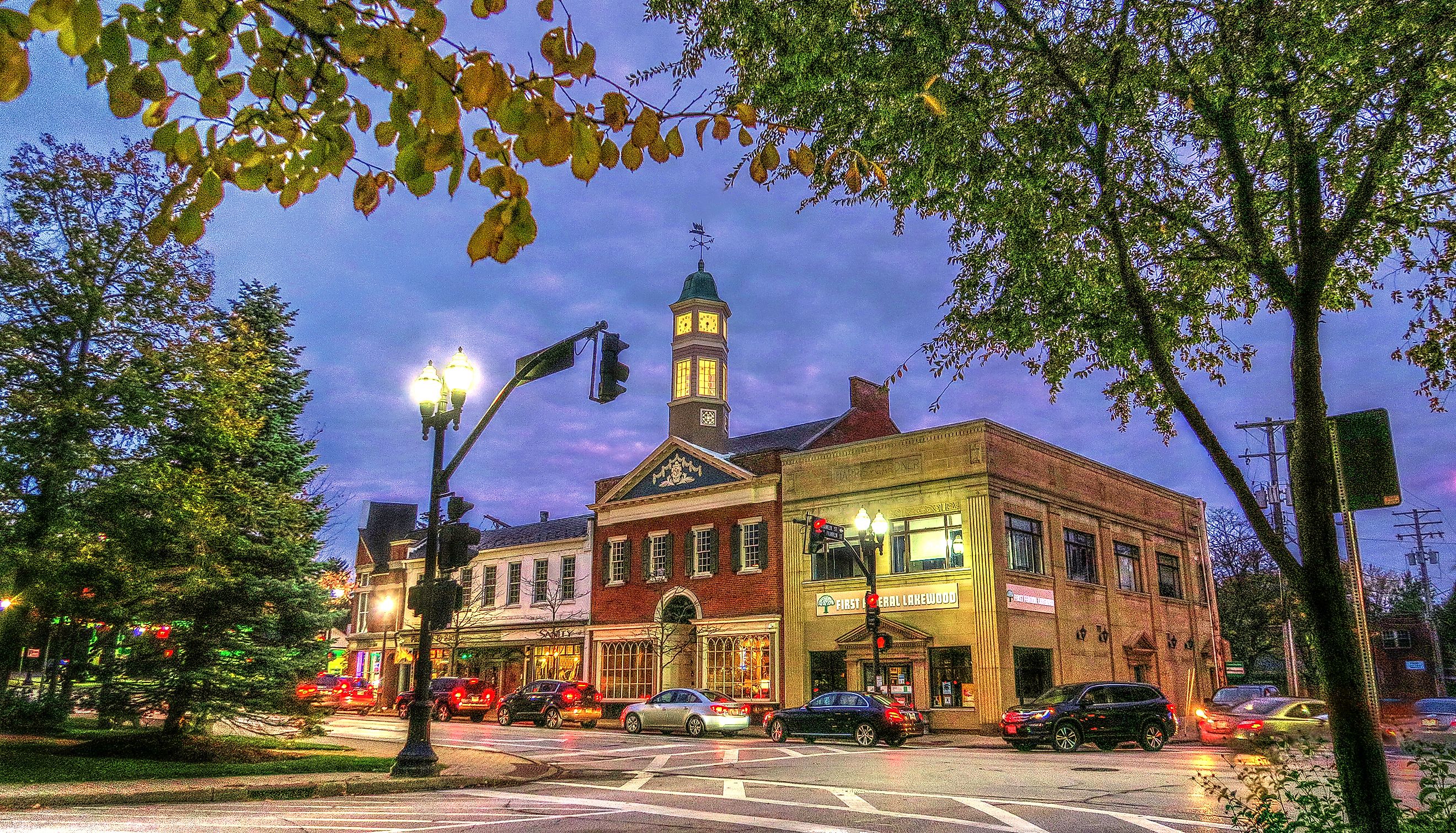
8 Fairy-Tale Small Towns In Ohio
These eight Ohio towns hide fairy-tale props among cornfields and rivers: a two-tier waterfall that powers a popcorn mill, a 23-foot cuckoo clock that yodels each hour, a coal-scented train roundhouse, and a bell tower spilling music over Tudor roofs. They never set out to be theme parks; they simply kept using what history left behind.
What matters here isn’t size or zip code; it’s the storybook feel of everyday errands. Eat ice cream above a sandstone gorge, hear bluegrass under kerosene lamps in an 1840 grain mill, or bike a trail where Amish buggies set the pace. After dark, the streetlamps still cast the same glow they did a century ago. Fairy tales didn’t retire in Bavaria; they settled quietly in these eight Ohio towns.
Chagrin Falls
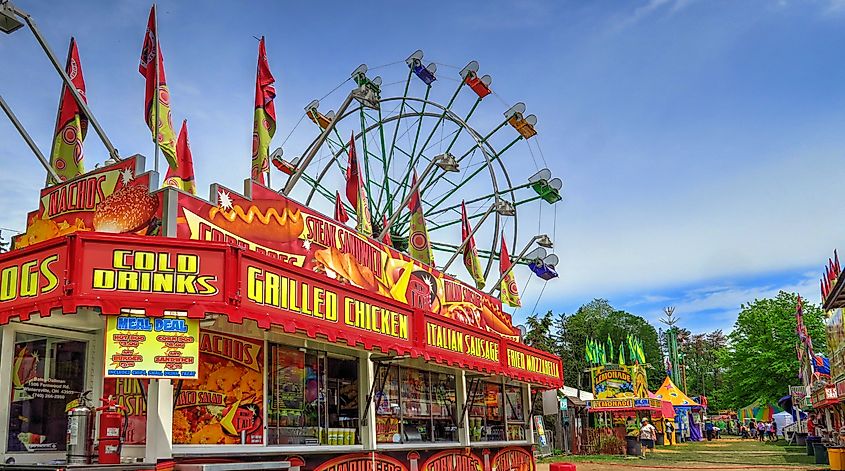
Water rushes straight through the heart of downtown Chagrin Falls, not in metaphor, but literally. The town’s namesake waterfall, split by a rocky island, spills over a sandstone ledge just steps from Main Street. Built around this natural feature, Chagrin Falls has preserved its 19th-century commercial core with discipline. It’s one of the few places in Ohio where you’ll find a candy shop perched above a river on century-old stilts. That shop, the Popcorn Shop, established in 1875, sells cinnamon almonds and maple popcorn inside a narrow white building that used to be the town’s hydro-powered gristmill.

Chagrin Falls maintains a theater, a bookstore, a riverwalk, and a thriving ice cream scene within three blocks. The Chagrin Valley Little Theatre has staged local productions since 1930, one of the oldest continually operating community theaters in the country. Fireside Book Shop, with its creaky wood floors and secondhand finds, has served the town since 1963. Restaurants with patio seating overlook the falls, but locals often line up instead for Jeni’s Splendid Ice Creams beside the bridge. North of the village square, Riverside Park stretches along the Chagrin River, quiet, green, and close enough to hear the falls from a bench under a tree.
Granville
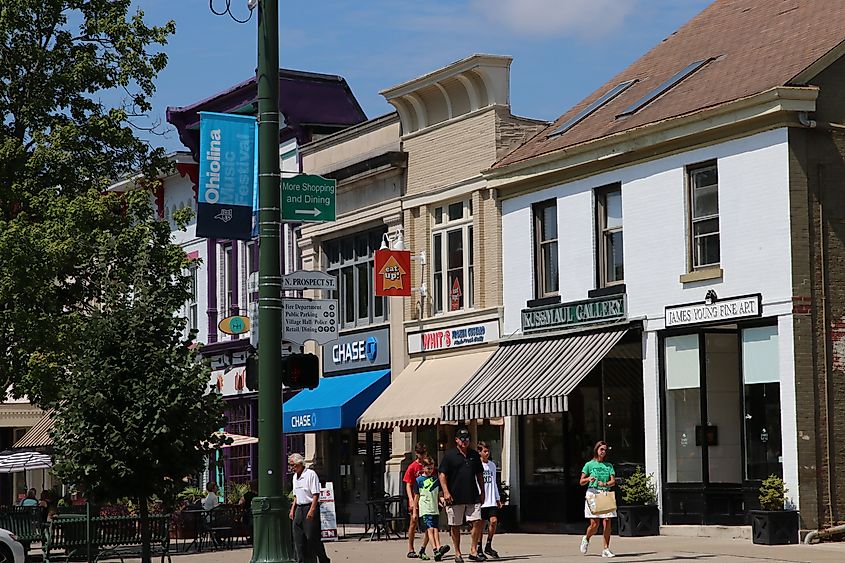
Granville was built to resemble a New England village, and it shows. The founders, transplants from Massachusetts in the early 1800s, laid out the streets with symmetry, installed white steeples, and planted their college, now Denison University, on a wooded ridge above town. The result is architectural continuity that’s unusual in Ohio: Greek Revival homes, slate roofs, and brick sidewalks that have been preserved rather than replicated. At the center stands the Buxton Inn, in operation since 1812, with original guest rooms that still carry the names of long-dead innkeepers and rumored ghosts.
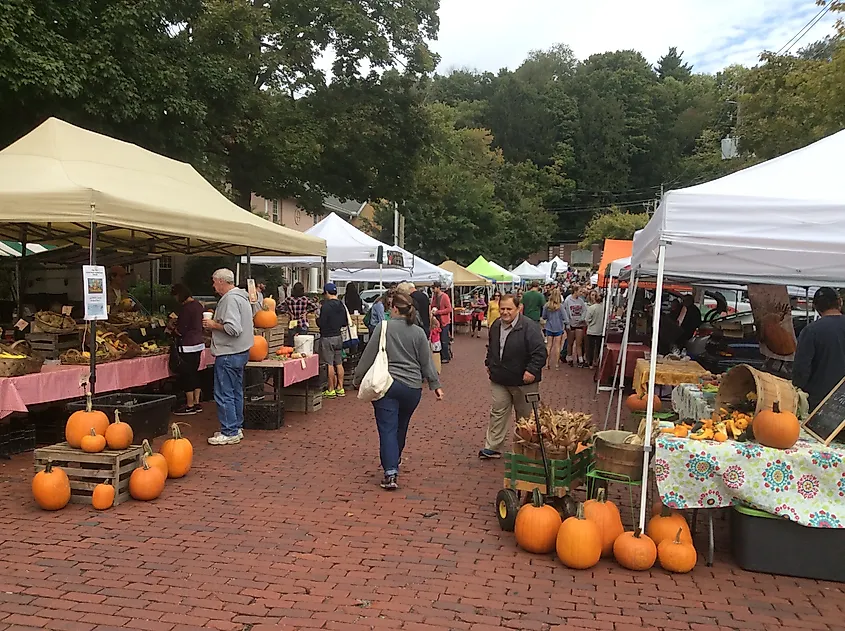
Denison’s campus includes the Denison Museum, a compact academic gallery with rotating exhibits and a small but solid permanent collection. Down the hill, Broadway Street holds Whit’s Frozen Custard, which began here before expanding statewide, and Readers’ Garden Bookstore, known for its deep inventory and local author events. Across from the town green is the Robbins Hunter Museum, a 19th-century mansion with a clock tower, Corinthian columns, and an interior mostly unchanged since the 1800s. On Saturday mornings from May to October, the Granville Farmers Market takes over a side lot nearby, selling fruit, honey, soap, and pies from Amish and family-run farms in the surrounding hills.
Yellow Springs

Yellow Springs was founded in 1825 as a utopian community and has resisted conformity ever since. The town is named for a nearby spring rich in iron and limestone, which still stains the surrounding rocks yellow. Antioch College, co-founded by Horace Mann in 1852, sits at the town’s edge and continues to influence Yellow Springs’ cultural and political identity. Sidewalk murals, impromptu street music, and storefronts displaying protest signs aren’t curated, just standard features of the town’s everyday atmosphere.
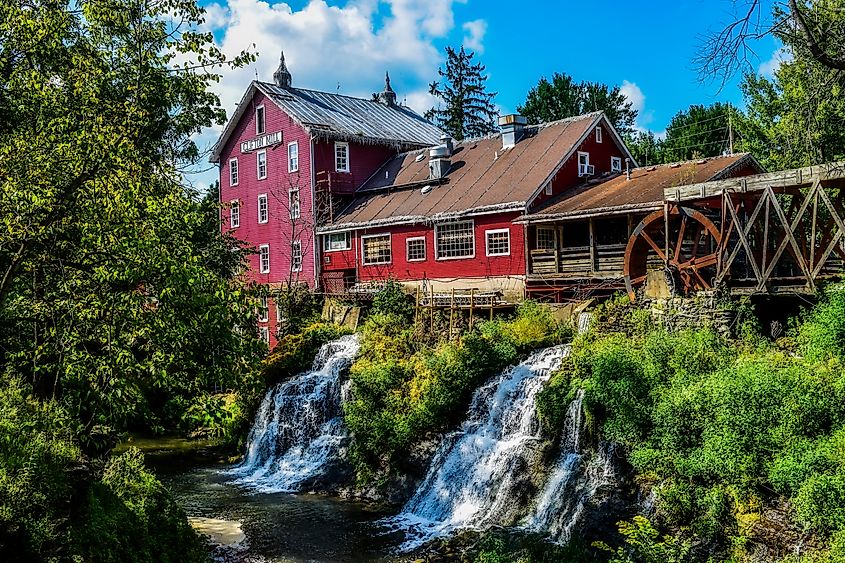
Glen Helen Nature Preserve begins just beyond the college campus and includes 15 miles of trails through limestone cliffs and hemlock groves. The Yellow Spring itself flows into Birch Creek near the Glen Helen Trail. Nearby, the Little Art Theatre shows independent films inside a single-screen cinema operating since 1929. On Xenia Avenue, diners fill the porch at Sunrise Café, known for its cornmeal pancakes and locally sourced lamb hash. Further south, Young’s Jersey Dairy draws weekend crowds for cheese curds, batting cages, and two mini-golf courses beside a working dairy barn. The surrounding landscape, ridge, gorge, prairie, and farmland, anchors the town, but its center remains human-scaled: walkable, active, and defined by its resistance to becoming anywhere else.
Tipp City
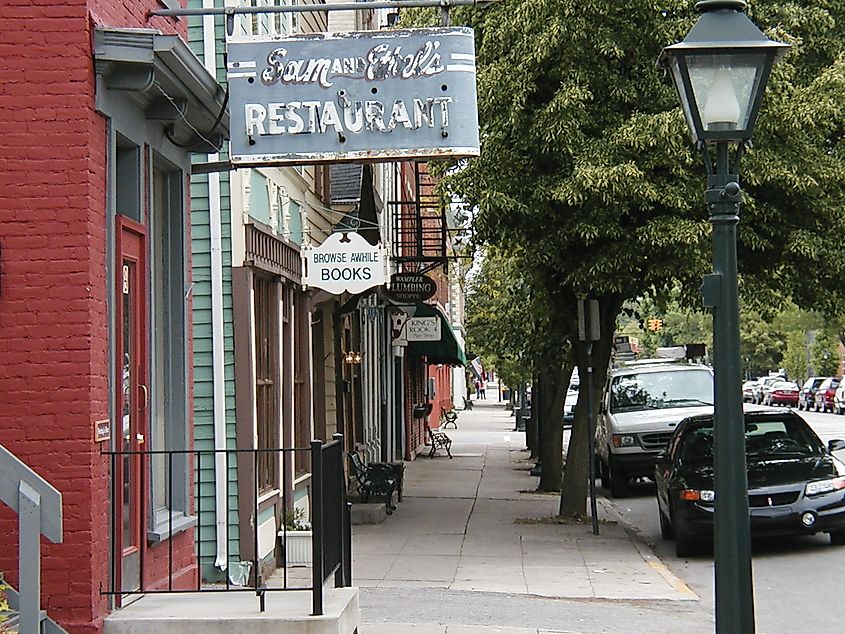
Tipp City began as a canal town in 1840, built along the Miami and Erie route that once connected Cincinnati to Toledo. Lock #15 still cuts through the edge of town, visible from Canal Lock Park, where the towpath trail runs flat and quiet past stonework from the 19th century. The name “Tipp” comes from “Tippecanoe and Tyler Too,” a political slogan for William Henry Harrison, a fact the town never stopped embracing. The original grain mill still stands beside the canal and now operates as the Tipp Roller Mill Theater, where bluegrass and folk musicians perform inside a space lit by kerosene lamps.
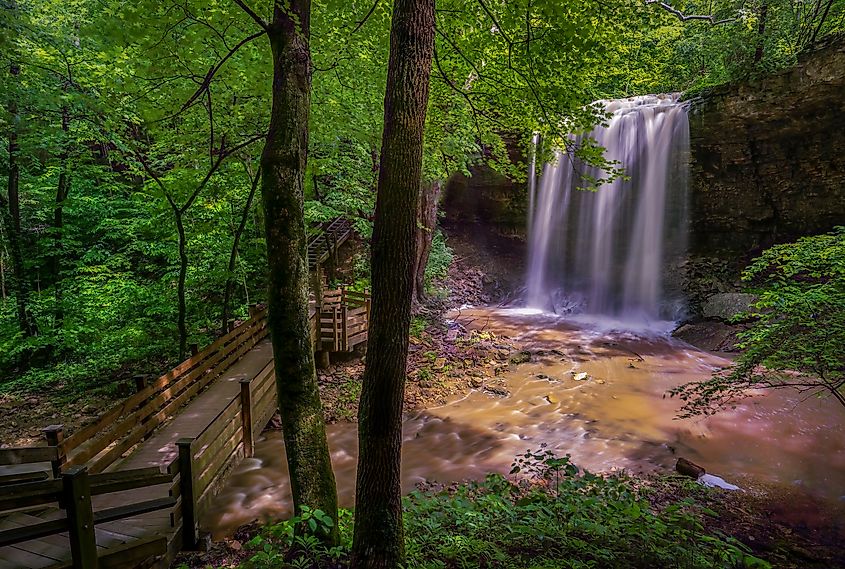
Downtown centers around Main Street, where Coldwater Café serves crab cakes and bourbon-glazed pork tenderloin inside a converted 1840s bank building, vault door intact. Across the street, Browse Awhile Books fills a creaky house with floor-to-ceiling stacks, specializing in vintage paperbacks and regional authors. Two miles out, Charleston Falls Preserve has 216 acres of trails through woodlands and prairie, with a 37-foot waterfall that drops through a limestone gorge at the edge of the Miami County plateau.
Sugarcreek
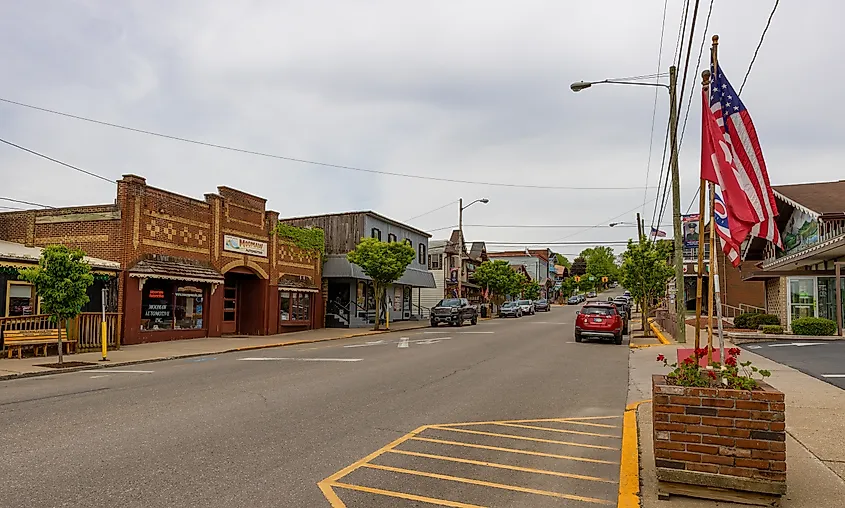
Sugarcreek has a working cuckoo clock that stands over 23 feet tall and plays a Swiss polka on the hour. It was built in the 1970s, dismantled for repairs in 2007, and reassembled downtown in 2012 beside the village fire station. The surrounding buildings mimic Swiss chalets, pitched roofs, wooden balconies, painted shutters. Sugarcreek’s identity combines Swiss heritage with Amish tradition, reflecting its early settlers and ongoing cultural mix. The name comes from the sugar maple trees along the creek, still visible south of the rail line that cuts through town.
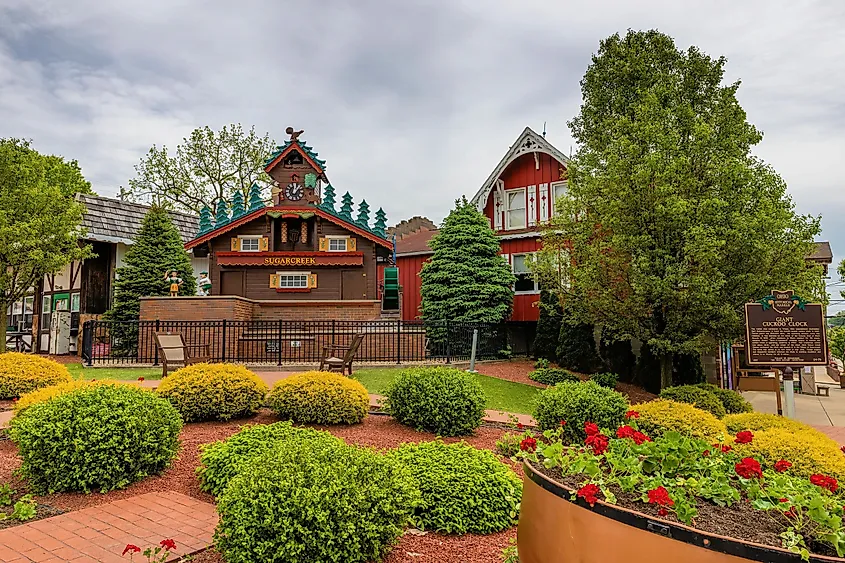
The Alpine Hills Museum, directly across from the cuckoo clock, holds exhibits on cheese-making, watch repair, and the town’s 1950s Swiss Festival, including full outfits worn by the original yodeling club. The Ohio Star Theater offers ticketed musicals and gospel concerts on a fixed stage near Dutch Valley Restaurant, which serves broasted chicken, rhubarb pie, and mashed potatoes in an 800-seat dining room. Four miles west, the Age of Steam Roundhouse Museum preserves 22 steam locomotives inside a circular brick engine house, the only full-sized working roundhouse of its kind in the country. Sugarcreek sits between farmland and wooded hills, but its town center feels built to charm, down to the painted flower boxes on every windowsill.
Mariemont
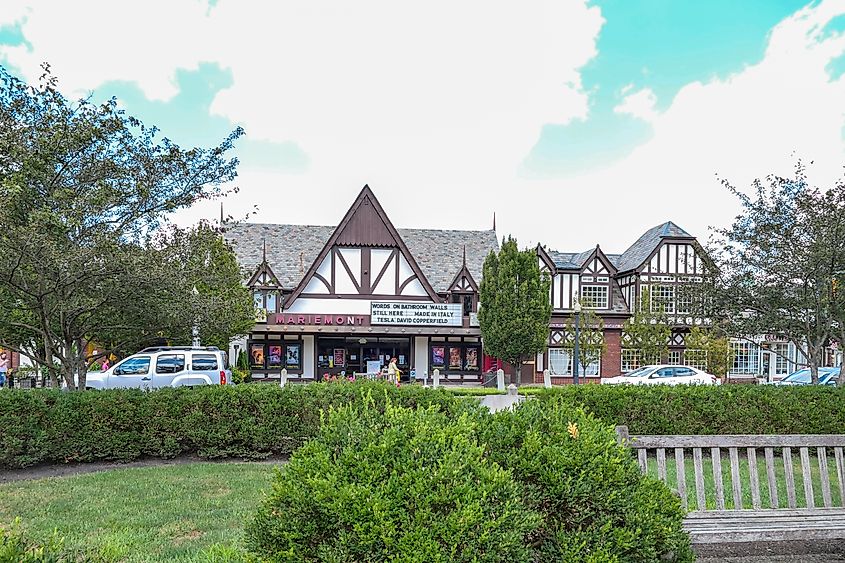
Mariemont was planned from scratch in the 1920s as a “model village,” based on British garden-city principles. Designed by town planner John Nolen and funded by heiress Mary Emery, the layout includes Tudor Revival architecture, patterned brickwork, central greens, and housing that blends into walkable blocks. It’s one of the few National Historic Landmarks in the U.S. designated for town planning. The Mariemont Bell Tower, visible from nearly every corner of the village square, holds a functioning carillon that chimes daily.
The Mariemont Theatre has operated since 1939 under a curved neon marquee and still shows foreign and independent films on multiple small screens. The Dilly Bistro serves trout and smoked duck BLTs inside what was originally a pharmacy, with local beer flights poured at the marble counter. Dogwood Park anchors the east side of the village and hosts open-air concerts near the bell tower in summer.
Geneva-on-the-Lake
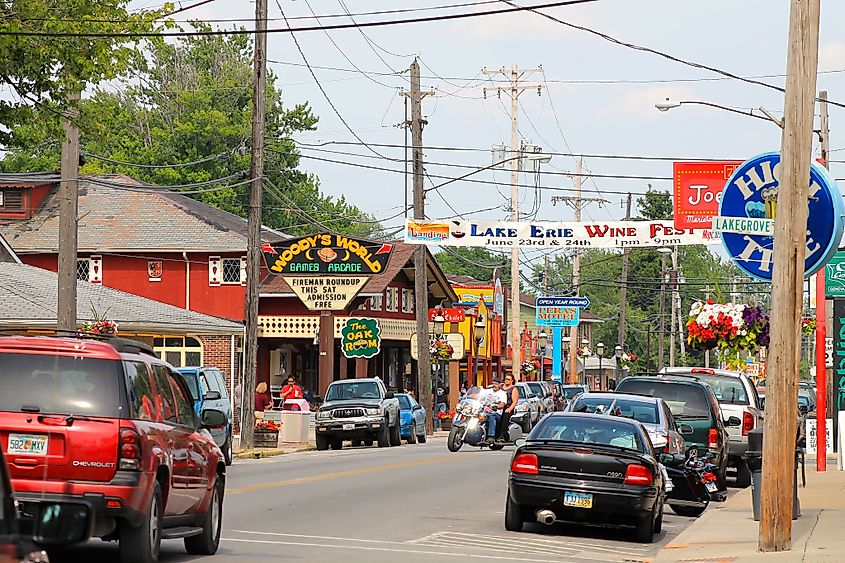
Geneva-on-the-Lake opened as Ohio’s first summer resort in 1869, built on a bluff above Lake Erie with dance halls, picnic grounds, and steamship landings. The strip, a mile-long lakeside roadway lined with arcades and food stands, remains intact. Many of the buildings date back to the 1940s and '50s. The town sits between vineyards and shoreline, with most businesses clustered around the water. It operates seasonally, with a pace that shifts dramatically between Memorial Day and October.
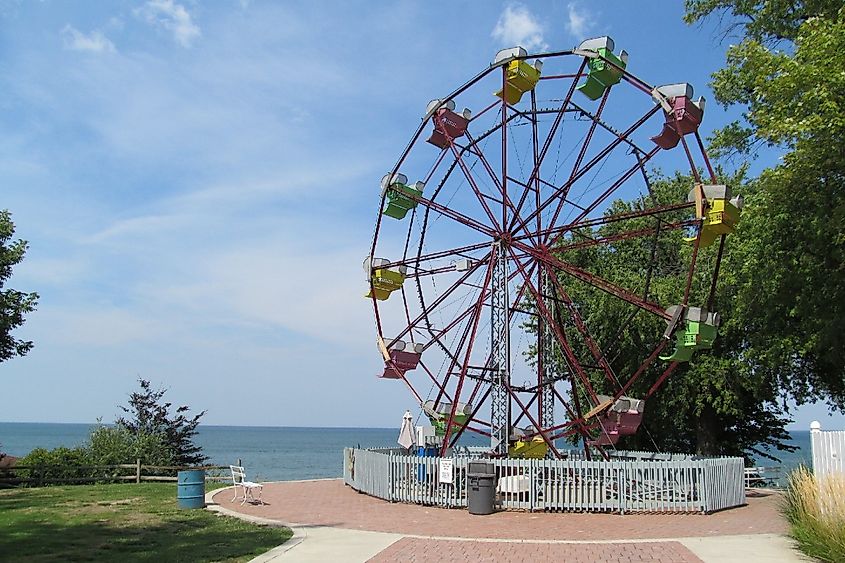
Geneva State Park occupies the western edge, with 698 acres of lakeshore, a marina, and a paved trail that runs behind cottages and into the woods. The Old Firehouse Winery, inside the town’s original fire station, serves wine slushies and runs a small Ferris wheel that spins beside the lakefront patio. Adventure Zone, across the street, has batting cages, bumper boats, and zip lines behind a retro façade that hasn’t changed in decades. Sportcenter Arcade, open since 1947, still features wooden lanes for skee-ball and original pinball machines under fluorescent light. Geneva-on-the-Lake doesn’t update itself, and that’s the point. It holds to its patterns: lake breezes, neon signs, open windows, and families eating soft-serve while gulls circle the parking lots.
Millersburg
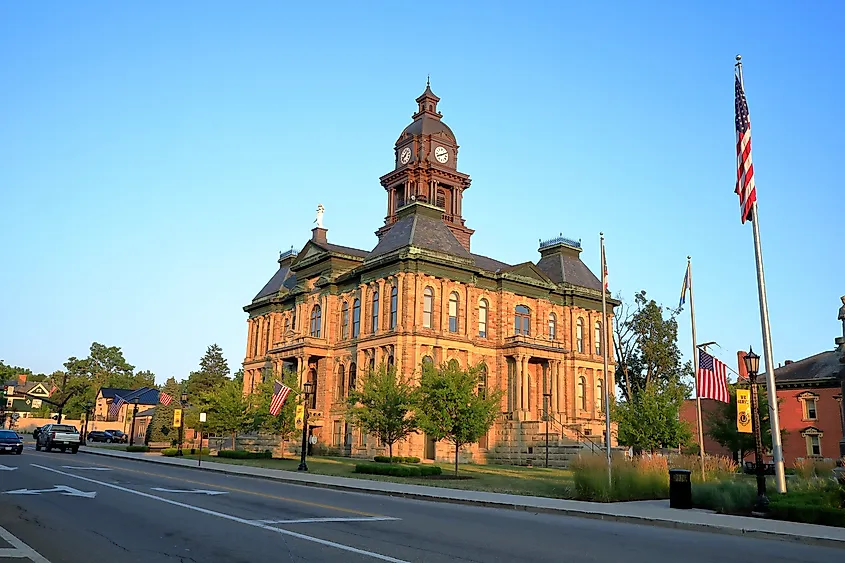
Millersburg has a courthouse with a clock tower that rises above the town square like something out of a storybook. Built in 1886, the Holmes County Courthouse anchors a village that still functions on a first-name basis. The sidewalks are brick, the storefronts haven’t shifted, and buggies outnumber bicycles in the morning. Millersburg sits at the edge of Ohio’s largest Amish settlement and acts as its unofficial capital. The town’s pace runs slow by design, intended for both steel wheels and foot traffic.

The Victorian House Museum, a 28-room home built in 1902, sits on a hill above downtown and displays local glassware, quilts, and period furnishings. At the bottom of the hill, the Millersburg Brewing Company serves oatmeal stout and wood-fired pizza inside a former auto shop on Jackson Street. Just outside town, the Amish & Mennonite Heritage Center displays “Behalt,” a 265-foot cyclorama illustrating Anabaptist history across six centuries. East of the village, Yoder’s Amish Home operates a pair of 1800s farmhouses, a working barn with Belgian draft horses, and a bakery that turns out fresh fry pies in the afternoons. The Holmes County Trail begins nearby—shared by cyclists and horse-drawn buggies, its gravel shoulders worn smooth by wooden wheels.
